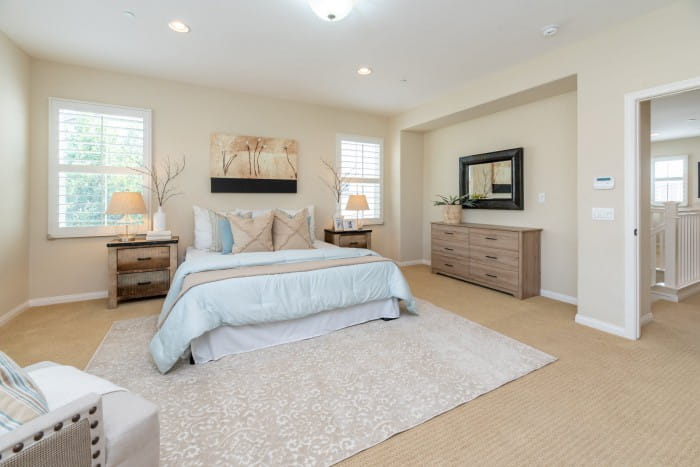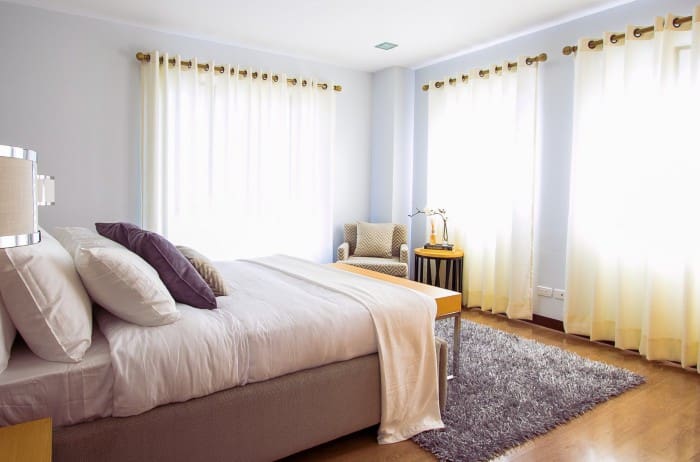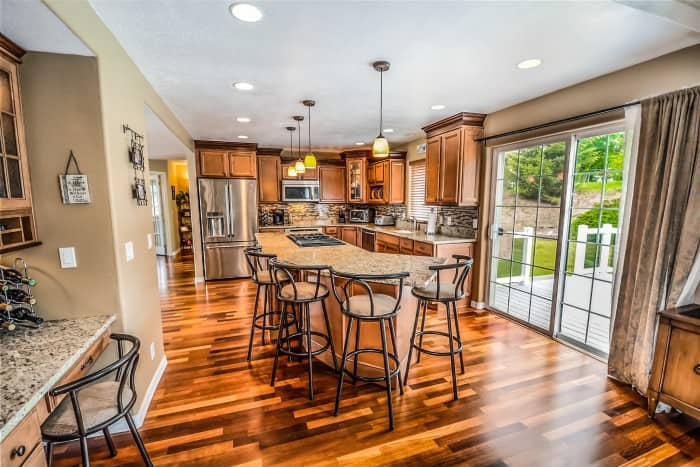
Indoor temperatures can become unbearable during summer, forcing many people to switch to robust air conditioning systems. Although running the AC system in full power might help keep the house cool and comfortable, this comes at a cost. Fortunately, you don’t have to pay high energy bills from running the whole-house air conditioner. Employing passive cooling methods can help keep your room cool while taking away the energy bill burden. Discussed below are ten ways you can use to keep your room cool and comfortable all day long.
- Invest in Heavy Thermal Curtains And Drapes

Heavy curtains and drapes provide an efficient way to block direct sunlight and heat gain in the house. This is particularly recommended for homes and rooms with large windows facing the direction of the sun. Although the glass panes allow natural light into the house, they also contribute to heat gain during the hottest part of the day. Covering these windows with thermal curtains and thick draping should however block direct sun rays and heat, thus keeping your room cool and comfortable.
- Open Windows To Allow Cool Air In At Night
Open windows at night to allow fresh air in. As you might have noticed, temperatures outside will be much cooler at night. Letting the fresh air will help cool the house/room automatically hence no need to run the air conditioner. If possible, open the windows all the way and draw the curtains for the best and fast results.
- Keep The Air Moving
As mentioned earlier, leaving the windows open at night promotes increased air circulation allowing your room to cool down. If your room, however, has more than one window, you should then open at least two of them to use one for inlet and other as the outlet. Running a fan in one room (inlet) and another in the other window to push air out of the room will speed up the cooling process.
- Avoid Appliances That Generate Heat
Almost every electrical appliance gives off heat when turned on. Some of these (including the oven and clothes dryer) generate lots of heat contributing to increased heat gain. Avoid using these appliances and instead, use those that don’t demand or generate lots of heat. One way to do this would be by hanging clothes on a clothesline outside. You might also want to avoid the oven and go for the microwave instead. Leave baking and other chores that demand lots of heat for cooler parts of the day.
- Sleep Lower

Hot air rises. That said, identifying a lower spot in your house to sleep in can make a whole lot of difference. If possible, put a mattress on the floor. If this doesn’t seem ideal, you could invest in a cooling pillow to help draw heat away from your head. Gel cooling pads and frozen water bottles in the bedroom might also help lower room temperature significantly, thus enabling you to sleep well.
- Reverse Ceiling Fan Direction
Very few people use ceiling fans during winter. Nonetheless, reversing the fan direction during summer can help keep your room temperature lower without depending on the AC. Reversing the fan to run counter-clockwise reverses the effect of hot air leaving your room cooler. As an added benefit, the ceiling fan isn’t power-hungry hence won’t put a dent on your energy bills.
- Run The Dehumidifier
Have you ever wondered how air conditioners help cool the room? These appliances not only deliver chilled air but also help remove moisture-laden air from the room. Removing moisture from the air allows its temperature to drop farther, hence the reduced temperature. In the same way, running a dehumidifier will have a similar effect, but at half the energy required to run an air conditioner. The best-quality dehumidifiers are capable of removing up to 70 pints of water from the home per day.
- Curtain And Close Any Unused Rooms
Make it a habit of shutting curtains tight and closing all unused rooms in the house. Leaving the windows open allows heat into the house, impeding your efforts to keep cool. Shut the curtains tight then close the doors to avoid this from happening. You can take this a notch higher by using heavy curtains to block heat from the house.
- Avoid Incandescent Lights

Incandescent bulbs are known to generate lots of heat. Switching to the more energy-efficient LED or CFL lights should help prevent heat gain from your light bulbs. LED lamps produce more light while using up less energy, and do not heat up as incandescent bulbs do. Replace all energy-gobbling bulbs in the house, and frequently used rooms, with the more efficient cooler ones.
- Use A Small Window Unit Air Conditioner
Unless you already have an Air conditioner installed in your house, investing in a much smaller window-unit, AC can help keep indoor temperatures lower. Window AC units are not only small but very easy to install as well. You can get one from an online store or even at a local store near you. Only run the window AC unit if all the methods outlined above don’t seem to work, or you want to attain lower temperatures.
